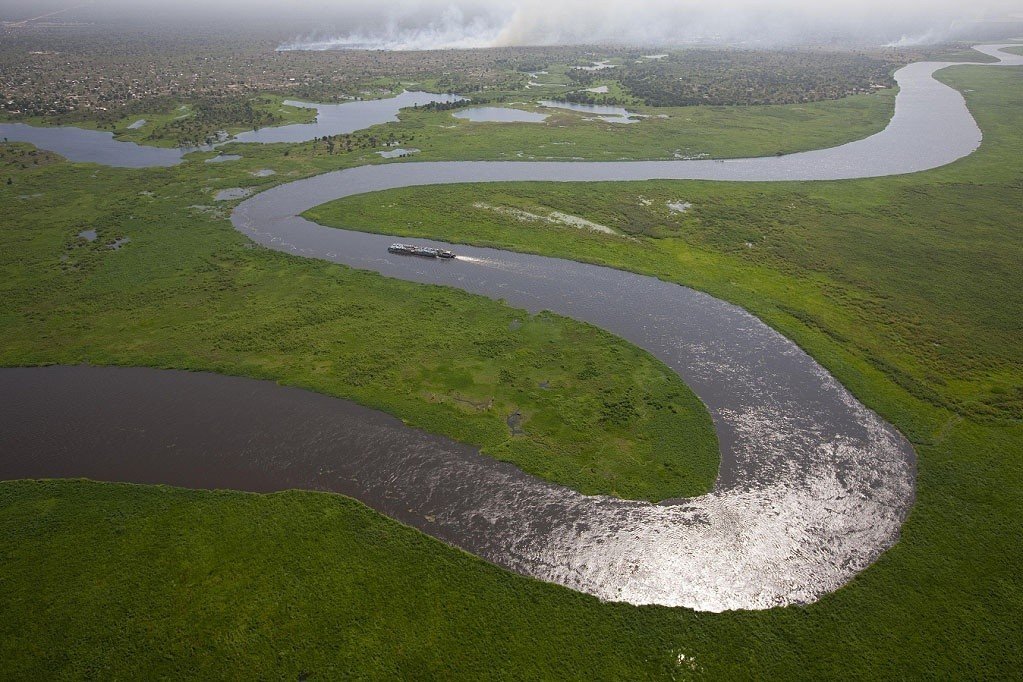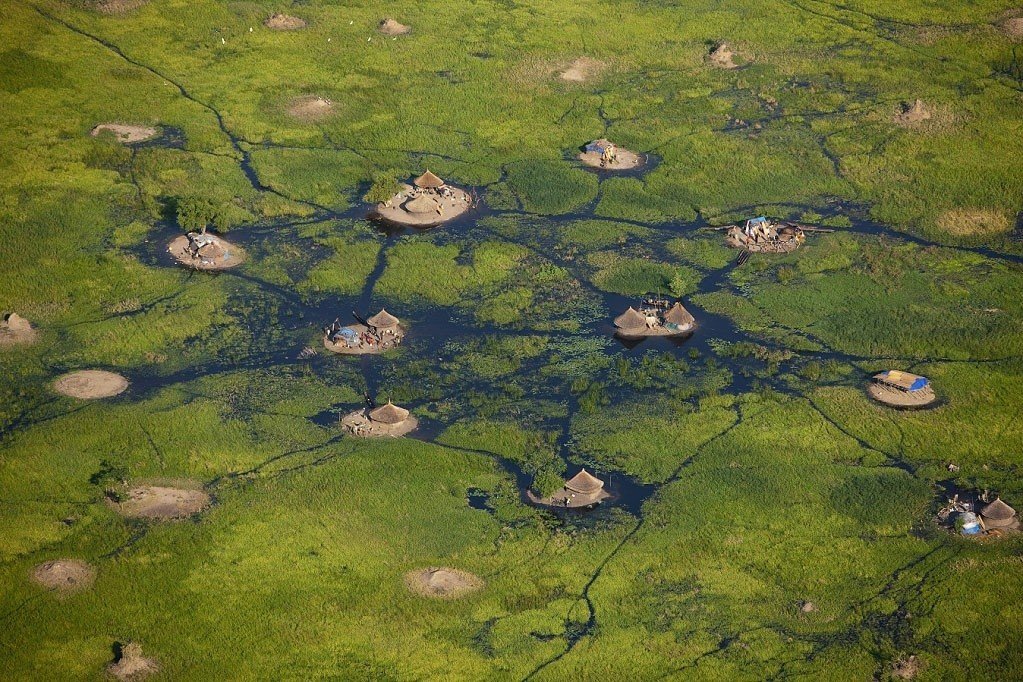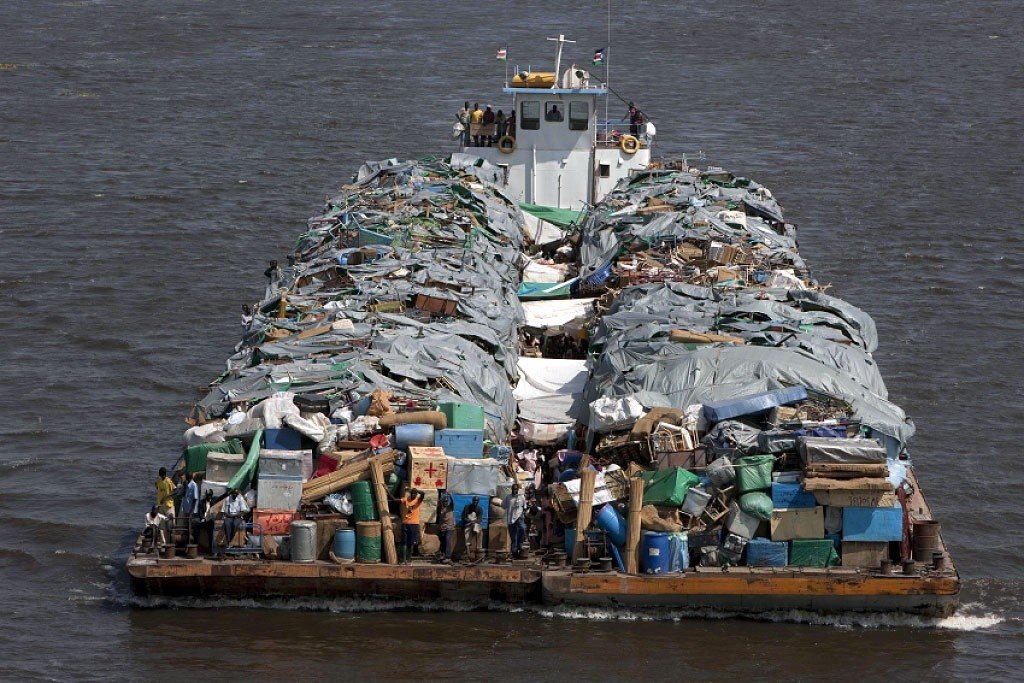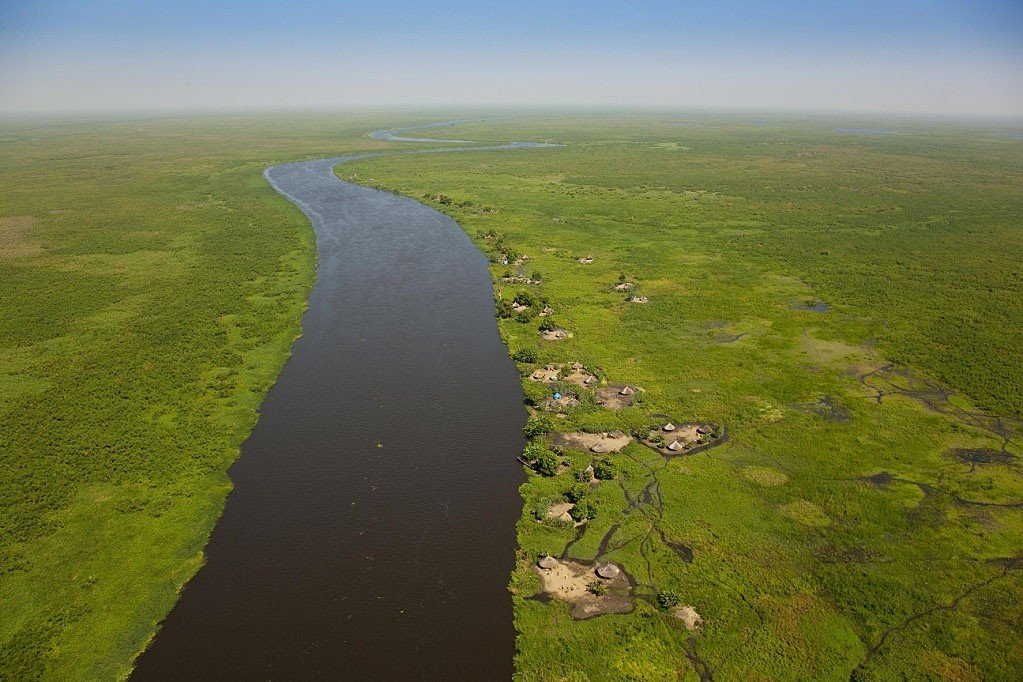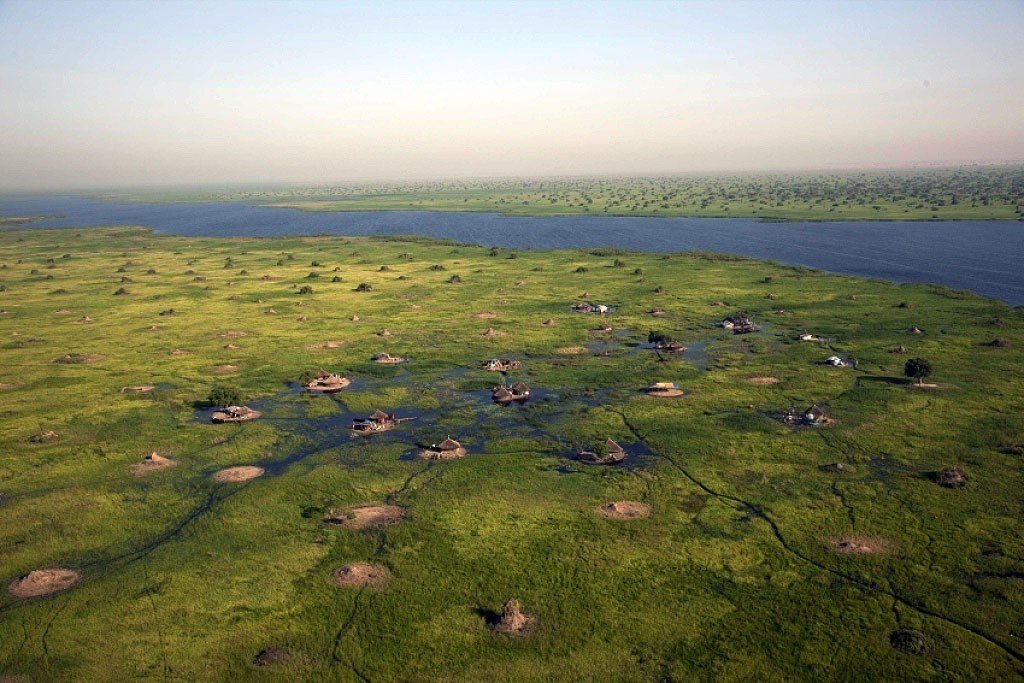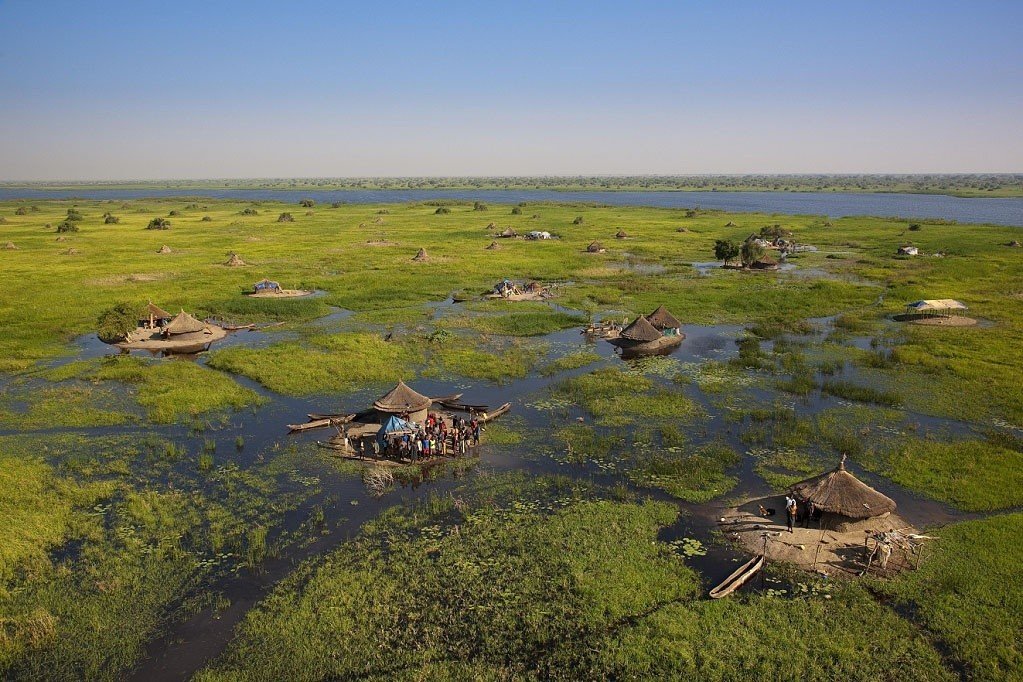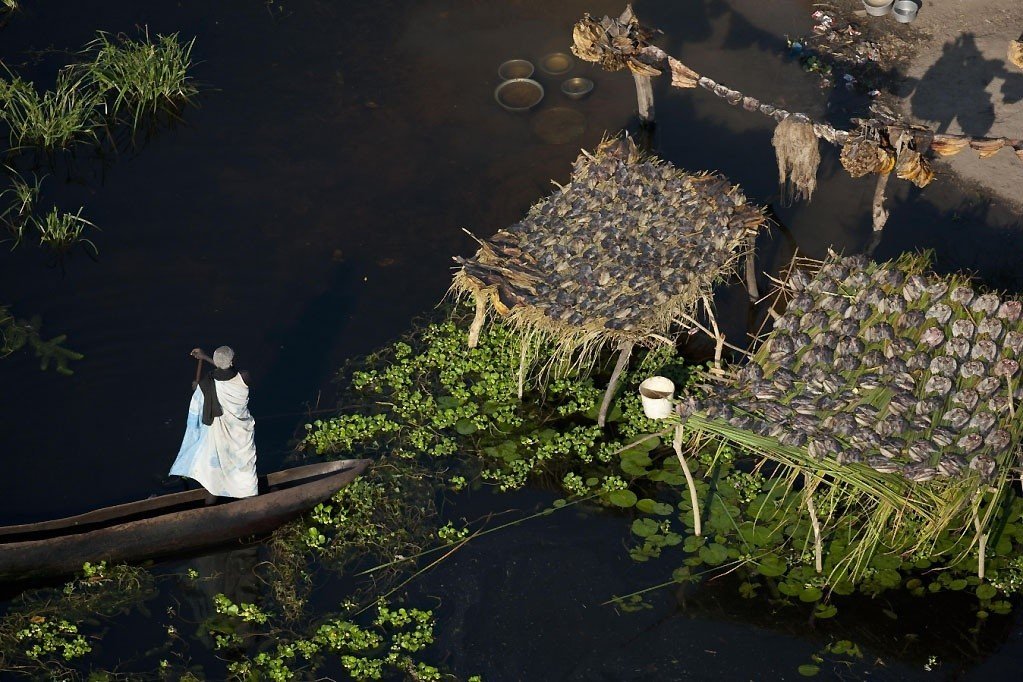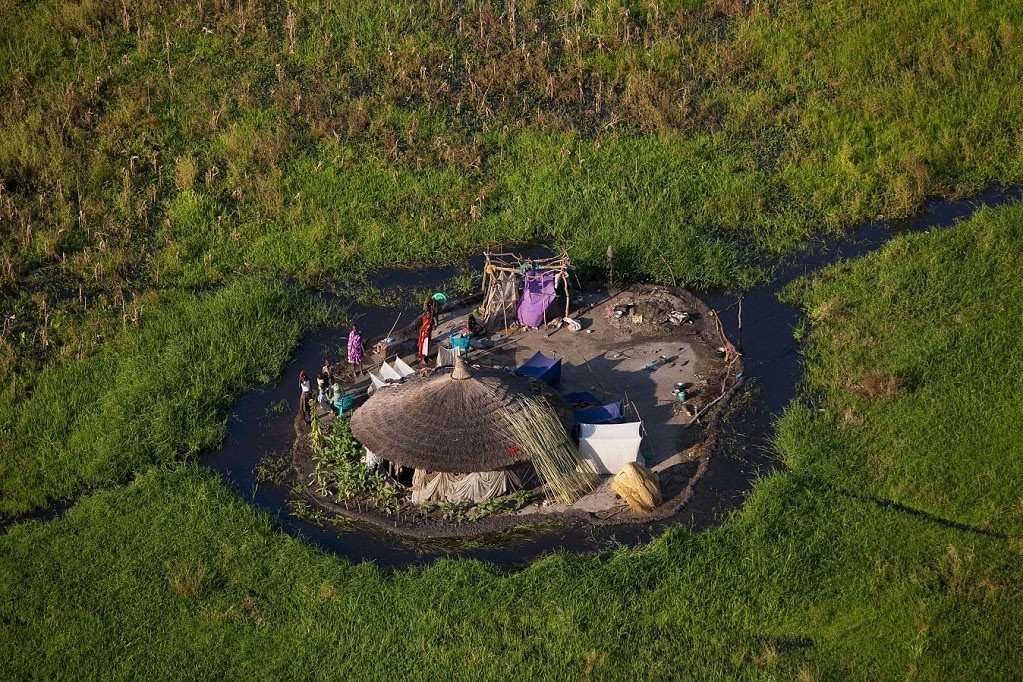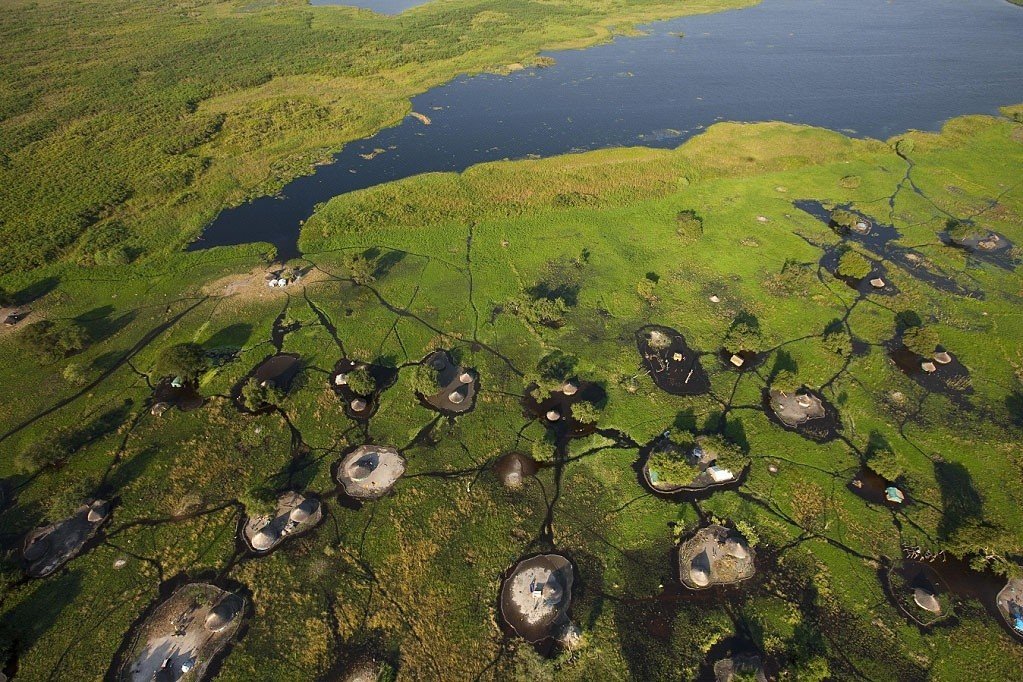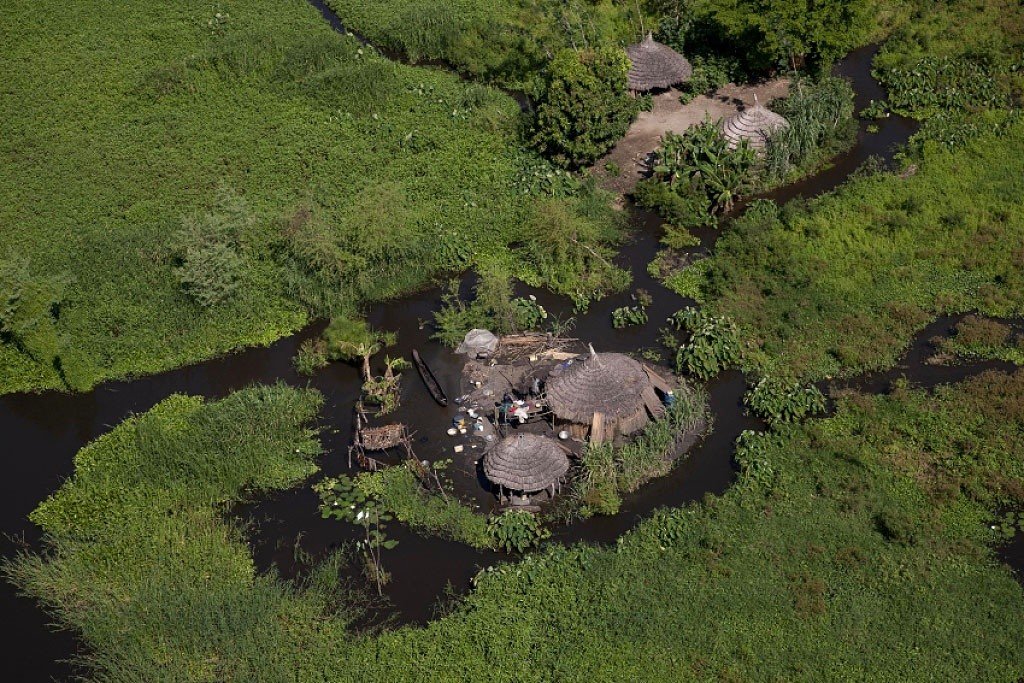The natural earth and its challenges push human capabilities, and the wetlands of Southern Sudan are the epitome of this curious form of encouragement. The Sudd, the name given to these swampy lowland regions, is practically inaccessible by land or watercraft. An impressive variety of reeds, aquatic grasses, and papyrus floats as islands to form a thick layer of green fed by the waters of the White Nile. However, the people Nilotic Nuer people have found a way to construct rondavels, a traditional round African building with a thatched, conical roof on the rarer, solid portions of land. These brown spots speckle the vast stretch of green, a sign of humanity’s existence overpowered by what has already been. When viewed from above, the landscape looks like a network of neurons, with axons of water stretching and wrapping around the nuclei of the village huts. The achievement of the indigenous architecture outshines the more artificial and forceful attempt to create a canal through the swamplands, which goes to say that only through embracing the gifts of nature can a more beautiful creation be born. Images ©Yann Arthus-Bertrand



